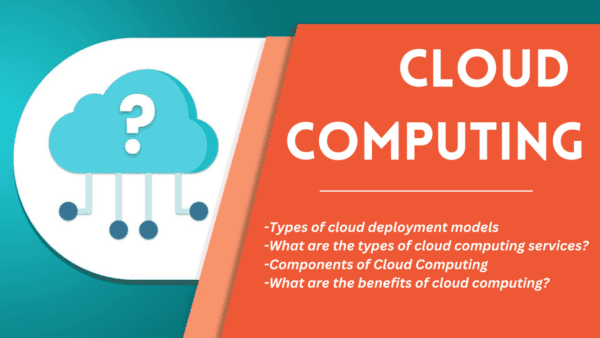Ollama is a framework that simplifies deployment and interaction with Large Language Models without the need for complex setup. It supports popular models like Llama (multiple versions), Mistral and more, all based on transformer architectures. Ollama basically allows us to run our own models without relying on any third party model providers, therefore keeping our information always private and our spending more predictable.
In this article we will be creating resources on Azure to run Ollama as a container on a GPU-enabled Azure Kubernetes Service managed cluster. This requires, on top of the normal Kubernetes deployment, some additional steps to allow detection of GPUs as allocatable resources in the cluster and scheduling to those resources.
Prerequisites
Will be using Terraform and its azurerm provider, so we will be needing the following installed on our workstation:
Also, because we will be creating a node pool using GPU-enabled virtual machines (VM), we need to make sure we have enough available vCPU quota on azure for the VM family (NCv3 in the case of the examples here) in the region we plan to use (eastus).
Example Repository
A complete example Terraform script, which creates a private network, an Azure Kubernetes Service cluster, with an additional GPU-enabled node pool, the Nvidia container that enables GPU resources and the actual Ollama container, can be found in the following GitHub repository:
GitHub – cladular/terraform-ollama-aks
Contribute to cladular/terraform-ollama-aks development by creating an account on GitHub.
The Script
For brevity, I will only cover the area of the Terraform script that specifically address the steps related to enabling and later scheduling GPU reliant workloads.
Once we have an Azure Kubernetes Service resource defined, we will create the GPU node pool
resource "azurerm_kubernetes_cluster_node_pool" "this" {
name = "gpu"
kubernetes_cluster_id = azurerm_kubernetes_cluster.this.id
vm_size = "Standard_NC6s_v3"
node_count = 1
vnet_subnet_id = var.subnet_id
node_labels = {
"nvidia.com/gpu.present" = "true"
}
node_taints = ["sku=gpu:NoSchedule"]
}Note the label “nvidia.com/gpu.present” = “true”, which scheduling of the Nvidia Device Plugin pod on that node, and the sku=gpu:NoSchedule taint, which blocks pod who don’t explicitly define that toleration from being scheduled on that node (as we only want pods that require GPU to be scheduled here).
Next, we create two helm resources, one for running the Nvidia Device Plugin helm chart (https://nvidia.github.io/k8s-device-plugin/nvidia-device-plugin by Nvidia), and one for running the Ollama helm chart (https://otwld.github.io/ollama-helm/ollama by Outworld)
resource "helm_release" "nvidia_device_plugin" {
name = "nvidia-device-plugin"
repository = "https://nvidia.github.io/k8s-device-plugin"
chart = "nvidia-device-plugin"
version = var.nvidia_device_plugin_chart_version
namespace = var.deployment_name
create_namespace = true
values = [
"${templatefile("${path.module}/nvidia-device-plugin-values.tpl", {
tag = var.nvidia_device_plugin_tag
})}"
]
}Which uses the nvidia-device-plugin-values.tpl values template file
image:
tag: "${tag}"
tolerations:
- key: CriticalAddonsOnly
operator: Exists
- key: nvidia.com/gpu
operator: Exists
effect: NoSchedule
- key: "sku"
operator: "Equal"
value: "gpu"
effect: "NoSchedule"
And
resource "helm_release" "ollama" {
name = local.ollama_service_name
repository = "https://otwld.github.io/ollama-helm/"
chart = "ollama"
version = var.ollama_chart_version
namespace = var.deployment_name
create_namespace = true
values = [
"${templatefile("${path.module}/ollama-values.tpl", {
tag = var.ollama_tag
port = var.ollama_port
resource_group = module.cluster.node_resource_group
ip_address = azurerm_public_ip.this.ip_address
dns_label_name = local.ollama_service_name
})}"
]
depends_on = [helm_release.nvidia_device_plugin]
}Which uses the ollama-values.tpl values template file which has llama3 as the model we will be running
image:
tag: "${tag}"
ollama:
gpu:
enabled: true
models:
- llama3
service:
type: LoadBalancer
port: ${port}
annotations:
service.beta.kubernetes.io/azure-load-balancer-resource-group: "${resource_group}"
service.beta.kubernetes.io/azure-load-balancer-ipv4: "${ip_address}"
service.beta.kubernetes.io/azure-dns-label-name: "${dns_label_name}"
tolerations:
- key: "sku"
operator: "Equal"
value: "gpu"
effect: "NoSchedule"
Note the additional annotations that will allow automatically creating a public hostname for this service, which we can later use for testing, using an IP address defined like this
resource "azurerm_public_ip" "this" {
name = "pip-${local.ollama_service_name}-${var.location}"
location = azurerm_resource_group.this.location
resource_group_name = azurerm_resource_group.this.name
allocation_method = "Static"
sku = "Standard"
lifecycle {
ignore_changes = [
domain_name_label
]
}
}Once all resources are defined, we need to run terraform apply to deploy everything to Azure (you might need to do az login if haven’t done so lately).
Testing The deployment
Now that the deployment is complete, we can use any tool for sending HTTP POST requests to our cluster, for example cUrl:
curl http://<ollama-service-hostname>:11434/api/generate -d '{
"model": "llama3",
"prompt": "Why is the sky blue?",
"stream": false
}'And get the generated response back from the model, with additional statistical information about the generation process.
Conclusion
In this article we used the simplest way (at least at the writing of this article) for running workloads that require GPUs on Kubernetes. Some other options which allow more advanced configuration and utilization of the GPU resources, like Nvidia’s GPU Operator and Triton Inference Server, can significantly improve “bang-for-buck” when using GPU VMs, but at the cost of higher complexity. This trade-off sums down to how AI intensive a given system is, meaning the more it requires GPUs, the higher the cost benefits will be from more advanced options.
This blog is part of Microsoft Azure Week! Find more similar blogs on our Microsoft Azure Landing page here.
About the author:

Reference:
Podhajcer, I. (2024) Running Ollama on Azure Kubernetes Service. Available at: Running Ollama on Azure Kubernetes Service | by Itay Podhajcer | Microsoft Azure | Jun, 2024 | Medium [Accessed on 24/06/2024]









 Using a SharePoint Online list as a Knowledge source via ACTIONS in Copilot AI Studio
Using a SharePoint Online list as a Knowledge source via ACTIONS in Copilot AI Studio
